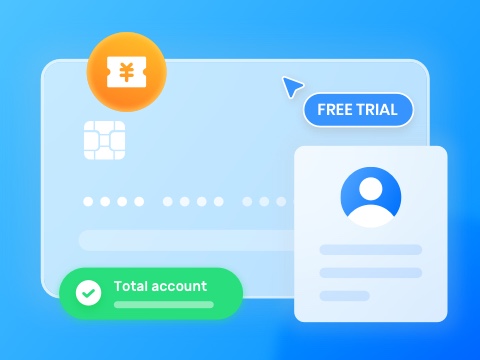The fitness landscape has experienced major transformations, and the days are gone when gym membership was the only option for remaining healthy. Digital fitness is arising, and trainers are trying to provide their services online through fitness app development. Therefore, this article will show how to create a fitness app and review fitness apps from every perspective.
6 Different Types of Fitness Apps
The vast fitness app market caters to different fitness goals, workout styles, and individual preferences. This section will highlight common types of fitness apps to know before you build your fitness app:
1. Activity Tracking Apps
Tracking apps benefit those not interested in sports but want to keep track of their health. Such apps collect data about users’ daily activities through smartphone sensors and wearable devices like the Apple Watch. Thus, you can check the number of steps taken, running distance, and stairs climbed daily through fitness apps.
Besides, they can show you routes for running, your average speed, remaining distance, and the distance you have covered. An interesting feature of fitness apps is their sleep quality estimation options and smart alarm clocks to regulate users’ sleep cycles.
2. Nutrition and Diet Apps
According to statistics, 26% of 18-29-year-olds use nutrition apps to track their calories daily. Thus, most fitness app development companies include a nutrition segment in their apps as they help promote a healthier lifestyle. These apps help users maintain weight by special diet plans and tracking their eating habits through food logging features.
Despite that, users can track their calorie consumption, weight, meals, and macronutrient consumption ratio. Consequently, they use special diet plans, healthy recipe ideas, and progress reports to motivate them toward their health goals.
3. Home Workout and Exercise Apps
Workout apps refer to apps that provide exercise routine guidance and video tutorials and help achieve other fitness goals. Some fitness goals might include weight loss, muscle building, gaining strength, and exercise endurance. Home workout apps are convenient for people who live far away from the gym and lack time for sports centers.
Hence, workout apps provide them with on-demand workout activity videos for demonstration and training plans according to individuals’ needs. Moreover, users can get specific rewards, badges, and progress bars after completing a fitness goal on such apps.
4. Personal Fitness Trainer Apps
Fitness app developers try to add this feature in every app, but there are also many dedicated personal fitness training apps. They offer personalized workout experiences as they have one-on-one certified personal trainers who provide training through video chats.
Besides, users can access trainers’ pre-recorded fitness classes whenever they want instead of waiting for trainers to come online.
Despite that, there are smart coach apps with AI integration to track your exercise poses and analyze your movements. In return, they provide real-time feedback and recommend the right exercising posture with machine learning algorithms.
5. Yoga and Meditation Class Finder Apps
It is the most popular fitness app category, with a global meditation app market value of $1.1 billion in 2021. Mediation apps offer guidance for yoga practices, relation techniques, and mindfulness exercises to promote mental health and release stress. According to research, around 87% of US adults are stressed, and this type of fitness app brings peace of mind.
Notably, they offer deep breathing techniques, meditation timers, wearable integrations, and live meditation classes. Furthermore, several fitness apps contain audio and video fitness classes teaching yoga and meditation for people to practice at home.
6. Health and Wellness Apps
When someone builds a fitness app, they focus on practical approaches to health and fitness and ignore integrating holistic approaches. Nevertheless, few apps are focusing on the holistic approach of wellness and health to improve mindfulness. This approach includes sleep tracking, habit tracking, stress management, healthy eating habits, and other wellness techniques.
5 Must-Have Features of a Good Fitness App
Since fitness app development is trending with the explosion of smartphones and wearable technologies, fitness app features have also evolved. That’s why you should delve into the pool of essential features that every fitness app must have to provide services.
- Login and Personal Profile: The most important feature should be login and sign-up through credentials. This feature helps fitness app developers secure user information and make custom-made sign-up and login pages for every device. Also, there must be age, gender, height, weight, and fitness goals insertion options for tailor experiences.
- Wearable Integration: Synchronization with wearable devices such as smartwatches and Alexa is another must-have feature of fitness-tracking apps. They can monitor your blood pressure and other physiological features to create a weekly or monthly report.
- Workout Routines: All apps must contain a goal-setting and tracking feature where users can monitor calorie intake and exercise periods. Moreover, they can set their daily goals related to sleep cycles, meditation, exercise, water intake, and other nutrition information.
- Push Reminders and Purchases: To get premium features, there must be an in-app purchase option instead of navigating to web browsers. Besides, the fitness app should push reminders and notifications for users’ retention and goal completion.
- Online Consultations and Videos: A fitness app may not be successful until it integrates online consultations with certified trainers, tips, and activity progress. Additionally, they should have pre-recorded videos demonstrating postures for exercise at beginner, intermediate, and advanced levels.
How to Monetize Fitness Apps
The downloads of fitness apps were 858 million times, generating revenue of up to $3.58 billion in 2023. Therefore, if you plan to create your fitness app, you should discover different monetization models to generate significant revenue.
- In-app Purchases: It’s a most common revenue strategy where users have to pay extra to unlock a premium feature. These in-app purchases lead them towards pre-recorded videos, extra health tips, and other training plans.
- In-app Advertisement: Secondly, you should use in-app advertising, such as rewarding videos, banners, rewarding surveys, and native ads. Certainly, it’s an engaging way of monetization where users have to watch a video in exchange for credits or other rewards.
- Freemium Models: For generating revenue, a freemium model can gain massive success, where users can try basic features for free. Conversely, you must add paid features, such as advanced fitness plans and ad-free content options, to your subscription plans.
- Fitness Classes: A fitness app development company can sell nutrition plans alongside workout content and recommend products to earn commissions through sales. Besides, they can host fitness workshops, masterclasses, one-on-one coaching, and personal training sessions to monetize the app.
- Brand Partnerships and Donations: Lastly, you can initiate joint marketing, cross-platform promotion, and brand partnerships. Also, developers can add a donation option from satisfied app users who wish to support the platform.
How to Create Your Fitness App
Creating a fitness app might be complex until you break down the process into steps and make it manageable. Thus, below is the step-by-step guide containing every detail you should consider before you build your fitness app.
1. Conduct Market Research
The initial step in building an app is to conduct in-depth market research to identify market trends and targeted audiences. In addition, you have to research rivals, decide on preferable OS versions, and narrow down the niche, whether meditation or workout. You should also know about key market players, core fitness app features, and common mistakes to avoid.
2. Shape the Concept and Design
After idealizing the concept, hire a reliable tech team with proven app development experience to shape the concept with discussion. Afterward, decide on app monetization models and platforms to release the app, such as Android or iOS. Later, you need to identify key features to include, like nutrition advice, workout planning, fitness planning, and video calls for telehealth.
Now that the pre-planning is complete shape your digital product based on your market analysis and group of targeted users. In this regard, your UI/UX designers can create a free prototype version for testing before a final interface draft.
3. Select Your Tech Stack
When your prototype is verified, choose an appropriate tech stack, as your choice directly affects the app’s budget. Hence, you can build native apps with Swift (iOS) or Java (Android) programming languages, but they consume a lot of time in production. Alternatively, one can use cross-platform frameworks such as React Native, Kotlin Multiplatform, and Flutter.
To build a fitness app quickly, you can choose no-code tools and integrate APIs or SDKs with platforms like ZEGOCLOUD. Moreover, it’s a feature-rich API platform that supports macOS, Windows, iOS, Android, Electron, and various other platforms to meet your development needs.

4. Develop, Test, and Repeat
In this step, apps are built according to your approved specifications, including frontend and backend development. This process also includes the time spent on testing and bug fixing, where quality assurance engineers assess the app’s functionality. Moreover, experts validate your MVP and ensure that the app is easy to use and has stable security when it comes to payments.
5. Launch, Market, and Maintenance
After testing the app, submit it to the App Store or Play Store while ensuring you meet their guidelines. The process doesn’t end there; you must develop an effective marketing strategy so the targeted audience knows about your product. Later, maintain and update your fitness app over time and add new technologies to improve the user experience.
How Much Does It Cost to Build a Fitness App?
No one can estimate the exact amount for fitness app development because it depends on various factors. Anyhow, the cost of making an app with fewer features starts from $ 24,000 to $137,000 with rich features. Again, it was an estimate for 2022, and it entirely depends on your region and the hourly rates of a development company.
According to another estimate in 2023, your fitness app development might cost $67,600, which doesn’t include planning, designing, and business analysts’ costs. In Eastern Europe, developers can make apps at $35-40 per hour rates, so you can estimate the total cost accordingly.
How Can ZEGOCLOUD Help for Fitness App Development
As discussed above, you can use fitness API and SDK platforms like ZEGOCLOUD to integrate complex business features in your fitness app. It supports 4K ultra-clear video quality and 48kHz audio sampling for high-quality video and audio processing of fitness courses. Additionally, you can integrate low-latency live-streaming technology to invite thousands of users to watch fitness instructors.

ZEGOCLOUD also offers one-on-one voice and video call APIs for health consultation from experts who can explain via screen sharing. Moreover, fitness app development companies can monitor their streaming qualities through the ZEGOCLOUD analytics dashboard and obtain technical support. Surprisingly, you can create your fitness app in four simple steps with ZEGOCLOUD UIKits in 30 minutes.
Conclusion
Now that you have learned almost everything about creating a fitness app let’s end the discussion. This guide has shed light on various fitness apps, their must-have features, monetization models, and developing costs. Hence, you can now build your fitness app, and ZEGOCLOUD can significantly contribute by integrating powerful features quickly.
Read more:
Let’s Build APP Together
Start building with real-time video, voice & chat SDK for apps today!










